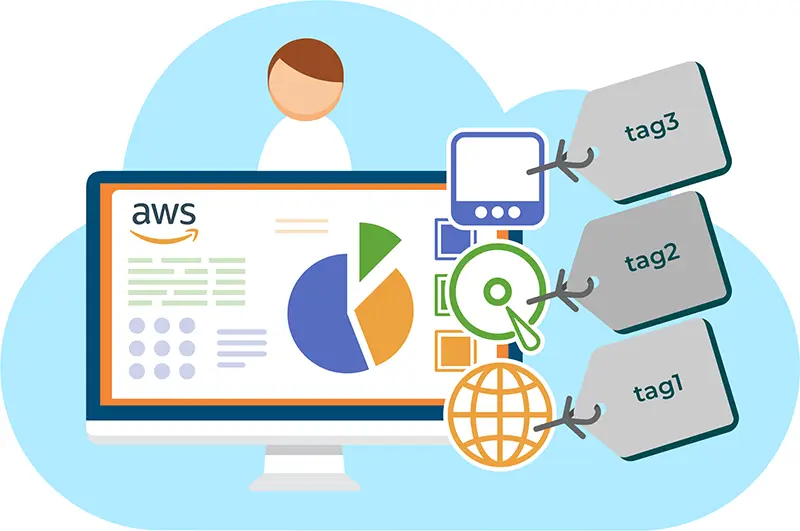¿Qué son las etiquetas y cómo puedes gestionarlas?
Las etiquetas le ayudan a administrar sus recursos, máquinas virtuales o imágenes y a categorizarlos por propietario, entorno u otro motivo para lograr una transparencia total de sus recursos en la nube y eliminar algunos desafíos de un proceso de optimización de costos. Las etiquetas son pares de claves y valores simples y personalizables por el usuario que son compatibles con muchos servicios de AWS.
Puede diseñar un conjunto de claves de etiquetas que se adapten a sus necesidades para cada tipo de recurso. Este conjunto de claves de etiquetas puede simplificar enormemente la gestión de recursos y la optimización de costos de AWS. Después de agregar estas etiquetas, puede buscar y filtrar recursos en función de ellas.

Reglas para implementar la estrategia de etiquetado correcta en el entorno de AWS
Guía paso a paso para etiquetar recursos de AWS
Vayamos directamente a agregar/crear etiquetas:
La pestaña Etiquetas en la página principal le permite aplicar etiquetas a activos nuevos o existentes en cualquier momento.



Puede crear etiquetas para una instancia específica. Para ello, vaya a la sección 'Instancias' → seleccione la instancia de interés -> seleccione la pestaña 'Etiquetas' y haga clic en el botón 'Administrar etiquetas'. Se abrirá la siguiente ventana, en la que podrá agregar o eliminar etiquetas para una instancia específica.

Un proceso de etiquetado eficaz permite a las empresas lograr una transparencia total de los costos y el uso de AWS. Una estrategia de etiquetado está diseñada para identificar a los propietarios de los recursos, el TTL, el proyecto o el equipo. Es mejor evitar los recursos sin etiquetas. Un sistema de etiquetado ayuda a analizar los gastos en la nube e implementar escenarios de optimización de costos de AWS.